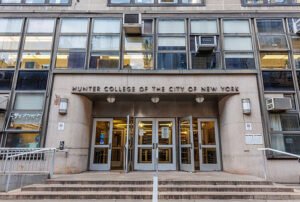November 16, 2014; New York Times
Recently, LaGuardia Community College leaders took a page from the four-year institutions that share the same metropolitan area. The college is expanding its development activities to increase funding for the scholarships desperately needed by many of its diverse low-income students. Thankfully, these activities are succeeding, as is evident from its recent annual gala, which led to the largest gift—$100,000—that the institution has ever received.
At a four-year institution, LaGuardia’s recent gift would not be newsworthy. But few community college alumni donors earn incomes that can afford hundred thousand–dollar gifts. Many start as immigrants, and most have families of their own. Adding to their balancing act, most students are also required to work while attending school. Two-thirds of LaGuardia’s families earn $25,000 a year or less.
There are 1,100 community colleges, and many are new to raising private donations and individual giving campaigns. LaGuardia’s efforts began thirteen years ago with the tenure of President Gail O. Mellow. Partially because community colleges have not developed a culture of giving, they have small endowments, if any, and few other resources to support needy students. The two-year college with the largest endowment is Washington State’s Clark College. It was founded in 1933 and has an endowment of $47 million. Although this is almost ten times larger than the average community college’s endowment of $4.6 million, it ranks only 676th compared to other college endowments. The average four-year institution has an endowment of approximately $230 million.
Unlike many four-year institutions, which began in the late nineteenth and early twentieth centuries, many community colleges opened in the 1960s and ’70s; LaGuardia opened in 1968. Community colleges were developed by the Truman Commission of the 1940s, but their numbers grew in response to demand by Vietnam veterans returning after the war and an increasing number of women entering college.
Historically, community colleges have depended on government funding to bridge the gap between modest tuition and expenses. At LaGuardia Community College, 69 percent of revenue stems directly from government funding plus an additional 18 percent indirectly from student tuition funded by government grants. This revenue source is decreasing as tax revenue declines due to the recession and other demands on government.
Sign up for our free newsletters
Subscribe to NPQ's newsletters to have our top stories delivered directly to your inbox.
By signing up, you agree to our privacy policy and terms of use, and to receive messages from NPQ and our partners.
Although four-year public institutions also depend on government revenue, they are not experiencing as large a reduction as community colleges. The Century Foundation, a nonpartisan think tank, found that between 1999 and 2009, funding per student increased by almost $14,000 at private research universities while the increase for community colleges was barely a dollar. While funding remains constant, demand is skyrocketing. For example, earlier this year, Chicago’s Mayor Emanuel announced a new scholarship program for Chicago public school students who have a grade point average of at least 3.0 and are academically ready for college level math and English. The program will cover tuition, fees, and books at any Chicago community college. The large majority of these scholarships will be generated through increased system efficiencies rather than new revenue.
As revenue stagnates, community colleges are forced to make choices between larger class sizes and increases in tuition. Many choose to limit class size. Students unable to enroll are targeted by for-profit institutions. A 2012 report from the U.S. Treasury Department noted a connection between a drop in government funding and an increase in the number of students attending for-profit educational institutions. Students at for-profit institutions have higher student loan default rates and lower graduation rates.
All of these cuts are leading community colleges like LaGuardia to search for private sources to fund scholarships and other essential student grants. Although educational organizations are the second-largest recipients of philanthropy (after religious organizations), most of these funds are directed away from community colleges. For example, large foundations awarded charter schools $297 million in 2012. This amount was almost double what community colleges received, even though community colleges educated over four times as many students. Recently, this disparity has begun to shift, as major foundations, including the Bill & Melinda Gates Foundation and Lumina, are increasing their support for community colleges.
Community colleges are also seeking to expand revenue through individual donations from alumni. Leaders realize that students turn to community colleges for several reasons. Many use them as a springboard or supplement to an education from a four-year institution. Others complete their education at the community college to become a dental assistant, nurse, paralegal, etc. Community college students receiving a degree from that institution have a stronger connection and a greater chance of becoming a donor than those attending a small number of classes.
At LaGuardia Community College, major donors receive lots of attention, but a strong individual funding stream develops with many smaller gifts from a large number of alumni. At first, community colleges may long for the wealthy alumni of four-year institutions, but eventually they learn gifts are more likely to come from donors with a strong connection to the institution. By cultivating these relationships, community colleges can grow a new source of essential revenue.
Currently, many community college alumni are dependable donors, but not to their secondary institutions. A study from the Chronicle of Philanthropy found that donors making less than $100,000 tend to donate a higher percentage of their income than those making substantially more. Wealthier donors tend to give to universities, while low- to middle-income donors tend to give to social service organizations.
For community colleges like LaGuardia, creating campaigns similar to those at four-year institutions could turn alumni into donors and start to stem the tide of funding inequality.—Gayle Nelson












